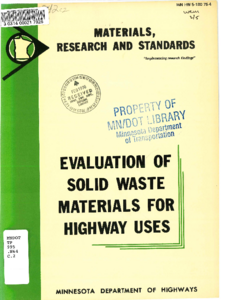Re-Use Of Minnesota Waste Material In Sustainably Designed Soils — Part 2
Date Created
2024-09
Report Number
2024-23
Description
Effect of Low and Moderate Recycled Concrete Aggregate Replacement Levels on Concrete Properties
Date Created
2023-08
Report Number
NRRA202305
Description










